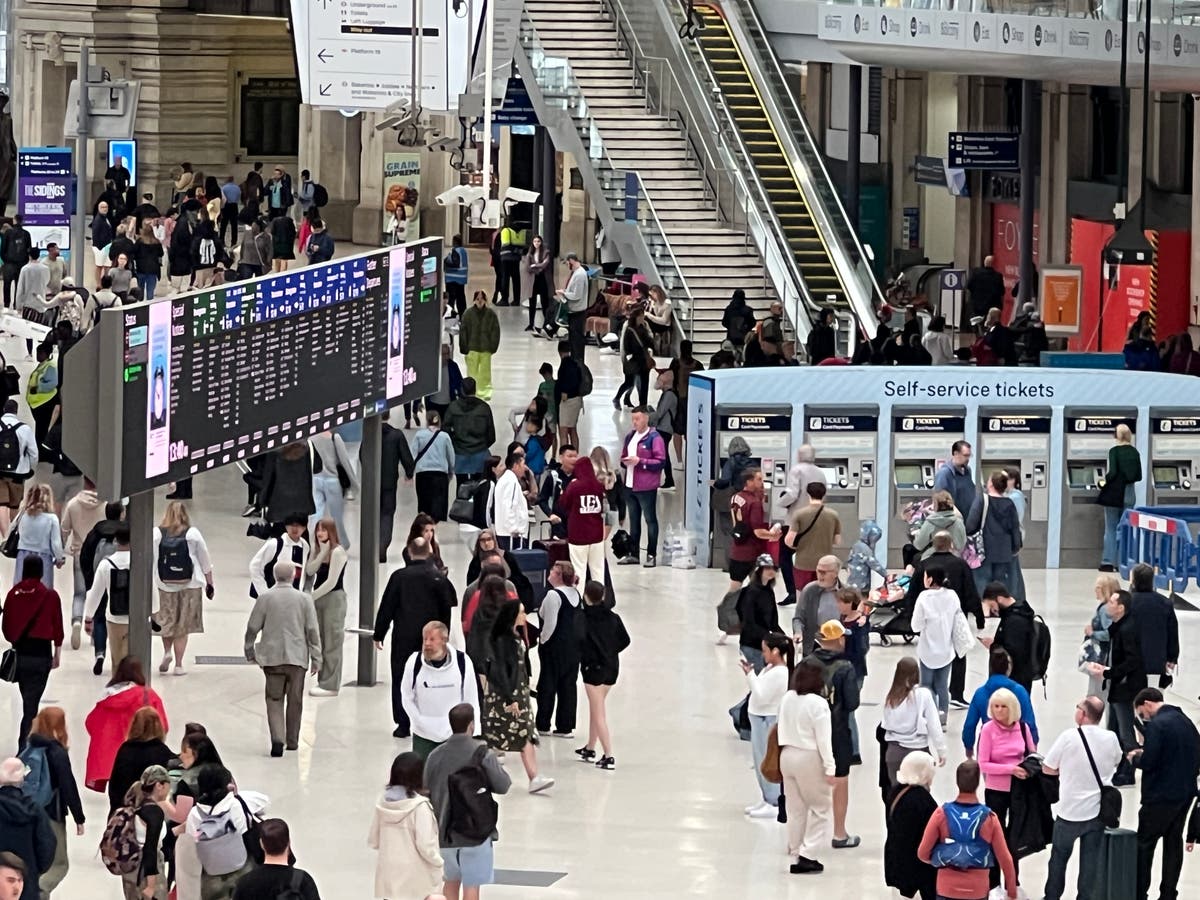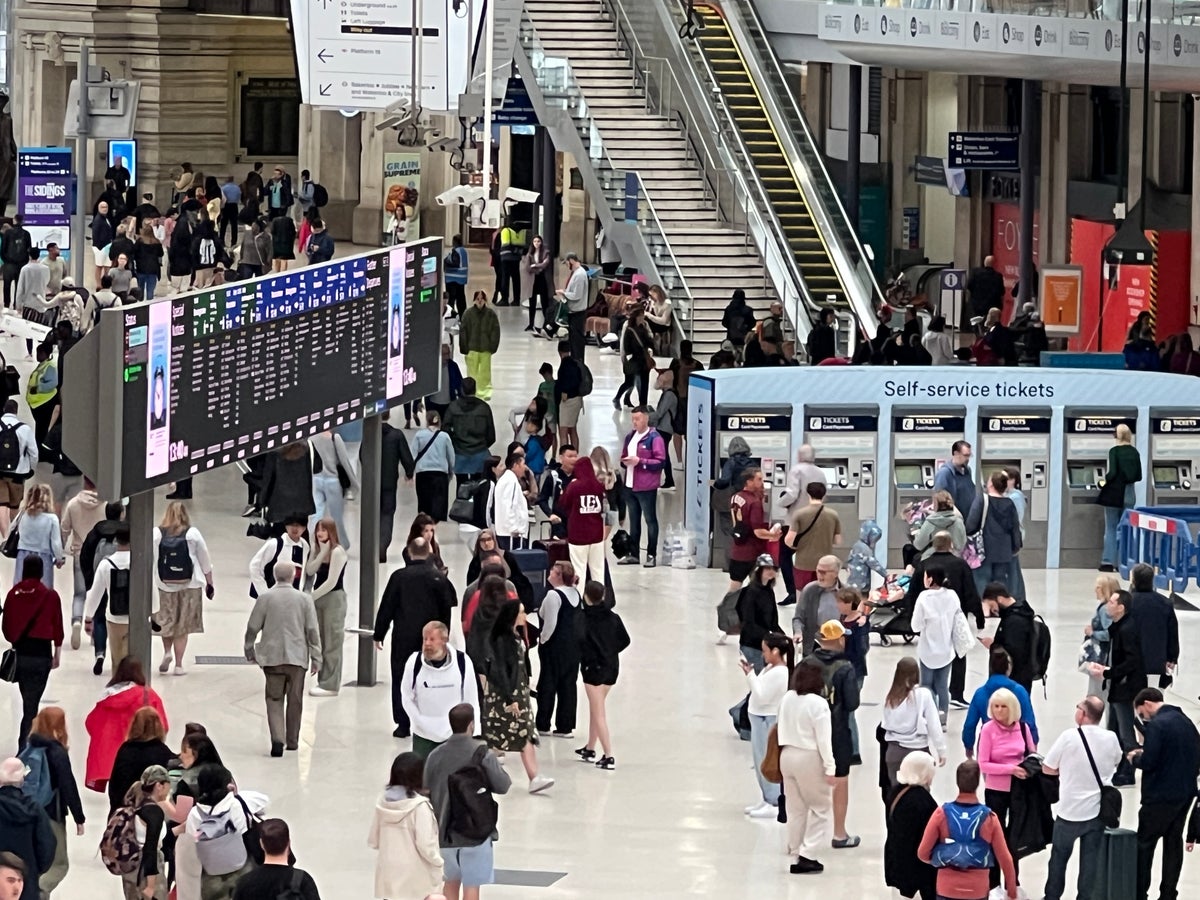Simon Calder, also known as The Man Who Pays His Way, has been writing about travel for The Independent since 1994. In his weekly opinion column, he explores a key travel issue – and what it means for you.
“Only travel by rail if absolutely necessary and if you do travel, expect severe disruption.” That is a message straight out of the 20th century, when rail strikes made regular appearances on the political stage. In July 1989, London and large parts of the wider road network were gridlocked as furious commuters – forced into their cars – battled their way into work.
It has taken three decades for national rail strikes to resume, but the unions are really going for it. Prepare for a flurry of numbers. I calculate Saturday 22 July marked the 30th day of walkouts in 13 months by up to 20,000 members of the RMT working for the 14 train operators who are contracted by the Department for Transport.
The RMT and its smaller sibling Aslef, representing train drivers, say many of their members have not had a pay rise for four years. (The drivers are on their own sequence of overtime bans.) Rail workers are demanding no-strings increases that take into account the high level of inflation. Any proposed reforms must be negotiated separately with commensurate boosts to pay.
But ministers – who are ultimately running the employers’ side of the dispute – insist even a modest sub-inflation pay offer, currently 4 per cent for last year and the same again this year, is contingent on modernisation (or cuts, as the unions see it). Rail revenue, they say, has collapsed with the loss of much of the “bedrock” of season ticket sales since the Covid pandemic.
The train operators and the unions have not met since April, and during the three months since then rail firms (again, following governmental policy) have decided to go ahead with radical change such as closing almost all ticket offices in England.
Caught in the middle: the long-suffering passenger. Since June 2022, industrial action has scuppered the travel plans of tens of millions of train passengers and made advance travel planning difficult.
I am writing on Saturday afternoon at London Waterloo, the busiest station in Britain, having done a tour of the country in the days since national rail strikes resumed. And I have some bad news for both sides in this seemingly intractable conflict.
Let’s start with the impact of the strikes. “Only travel by rail if absolutely necessary and if you do travel, expect severe disruption” is actually the 2023 message from East Midlands Railway. Yet walking London St Pancras International this morning, it felt normal: disruption as usual, if you will. Trains were departing regularly to Nottingham, Corby and Sheffield.
Thameslink, which shares the station, was running only northbound to Luton and Bedford, but there seemed no shortage of travellers. And more Southeastern passengers were using High Speed One trains to Kent than on any previous strike day, thanks to an hourly train connecting the capital with Canterbury, Margate and Ramsgate.
“Expect severe disruption”? – quite the opposite. With fewer trains operating than normal, rail congestion has eased and the services that are running are more likely to be on time. Friday, a non-strike day for Southeastern, was far more chaotic due to a lineside fire.
Here at London Waterloo, where South Western Railway is another “Is your journey really necessary?” merchant, plenty of travellers ignored the advice.
Thirteen months of rail strikes have divided the travelling public into three points of view:
- “I’ll work around it”: commuters and longer-distance business travellers who can easily switch to virtual meetings and work from home on strike days
- “You can’t tell these days”: people who have no choice but to travel by rail and, increasingly, find they can’t tell much difference between a day of industrial action and disruption as usual
- “It’s irrelevant”: car owners who have given up on trying to plan, and walked (or rather have driven) away from the railway
The last lot, unfortunately, comprise the future for a flourishing railway. Just at a time when the industry desperately needs to attract “discretionary” passengers, trains are more unreliable than they have been since the 1980s. That was an era of decline: the warring factions in this exhausting dispute have created exactly the same conditions.
The travelling public now expects a lousy service. Watch for the cuts to start soon as we contemplate an incredible shrinking railway.







More Stories
Everything you need to know about July and August rail industrial action
‘It’s cancerous’: How seaside towns fight back against second home owners
EasyJet flight diverted after passenger medical emergency on board